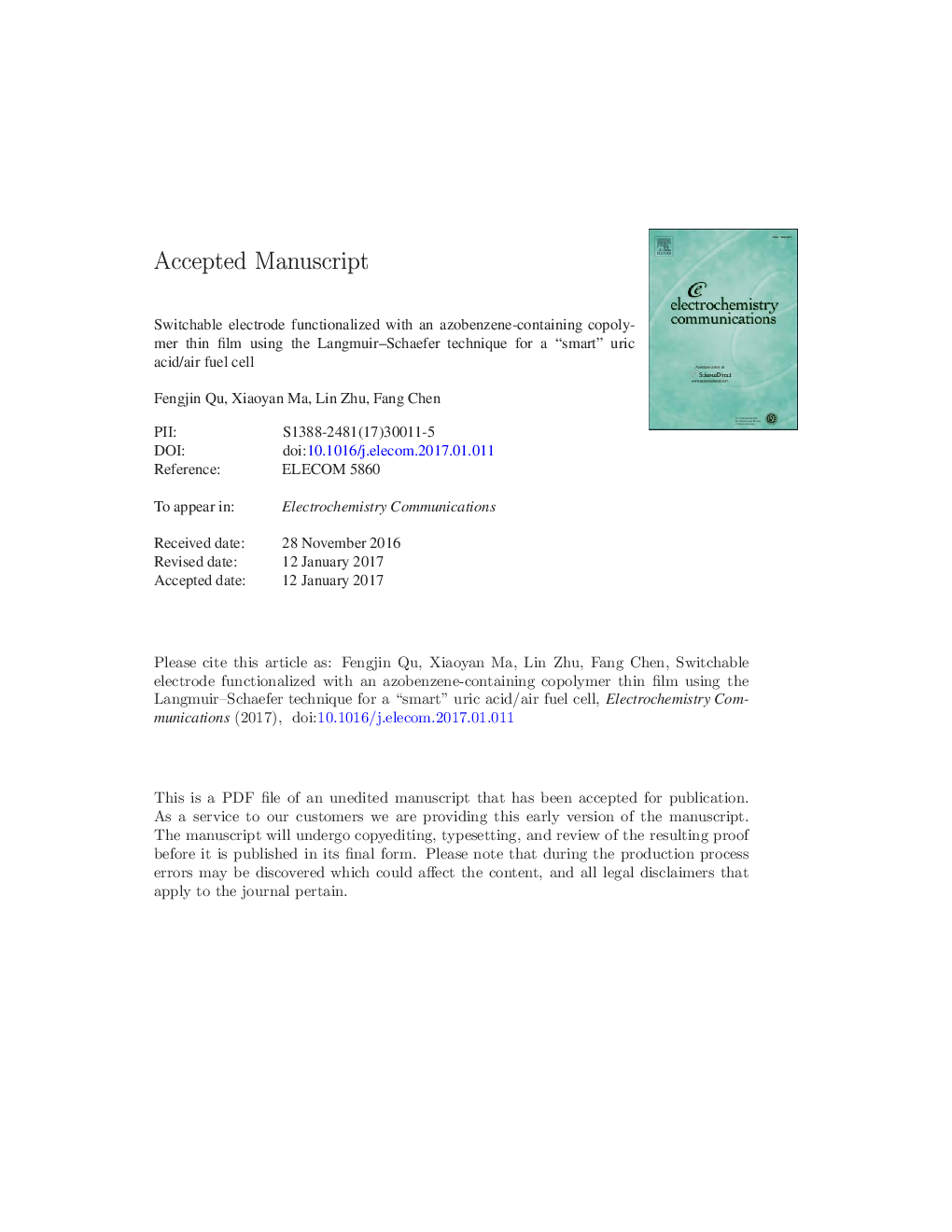| Article ID | Journal | Published Year | Pages | File Type |
|---|---|---|---|---|
| 4766450 | Electrochemistry Communications | 2017 | 20 Pages |
Abstract
A new photoswitchable electrode triggered by a brief light signal was fabricated by depositing an azobenzene-containing copolymer on an indium tin oxide substrate decorated with gold nanoparticles. The polymer formed a compact, complete thin film on the electrode surface using the Langmuir-Schaefer technique and offered reversible and stable switching performance. The conductivity and hydrophilicity of the electrode changed under UV/visible light due to the photoisomerization of the azobenzene moieties in the polymer film, influencing electron transfer and mass transport at the electrode. The electrochemical characterization demonstrated that the electrode exhibited reversibly switchable electrochemical behavior. In its active state, the as-prepared electrode possessed efficient electrocatalytic capability towards uric acid oxidation with a maximum anodic current density of 0.97 mA·cmâ 2. The uric acid/air fuel cell assembled from the photo-triggered anode and a Pt/C-modified cathode operated with an open circuit voltage of 0.12 V and a maximum power density of 41.33 μW·cmâ 2. The cell exhibited reversible switching performance (four cycles) and high stability: after one month the power output was 94.2% of the original maximum value.
Related Topics
Physical Sciences and Engineering
Chemical Engineering
Chemical Engineering (General)
Authors
Fengjin Qu, Xiaoyan Ma, Lin Zhu, Fang Chen,
